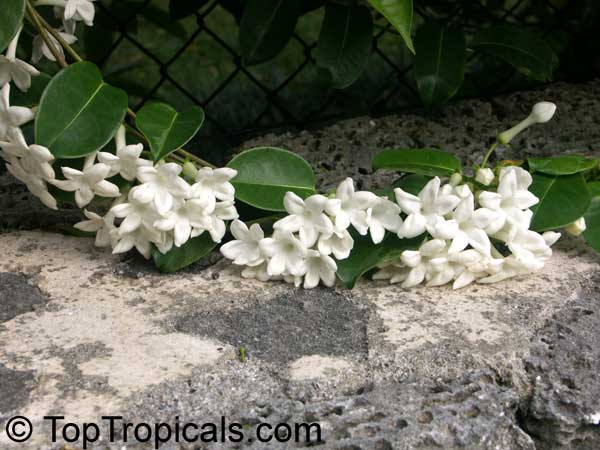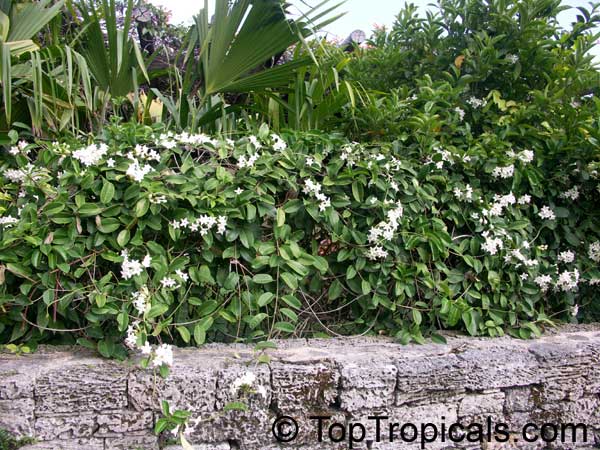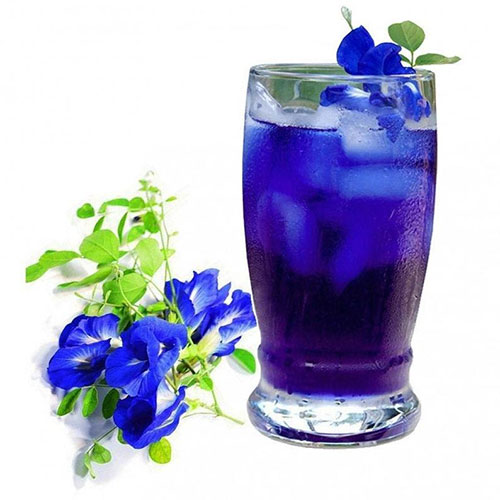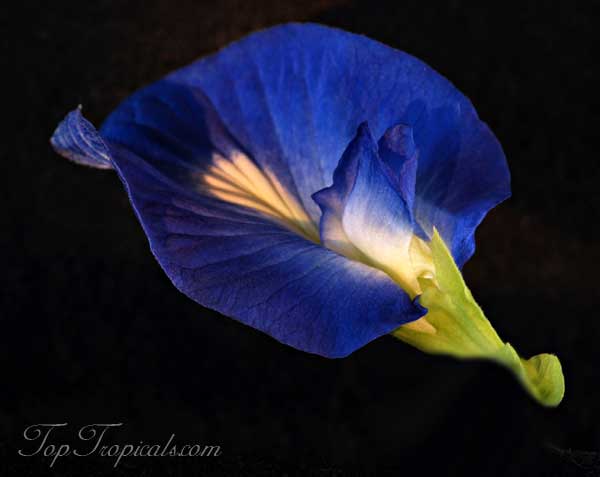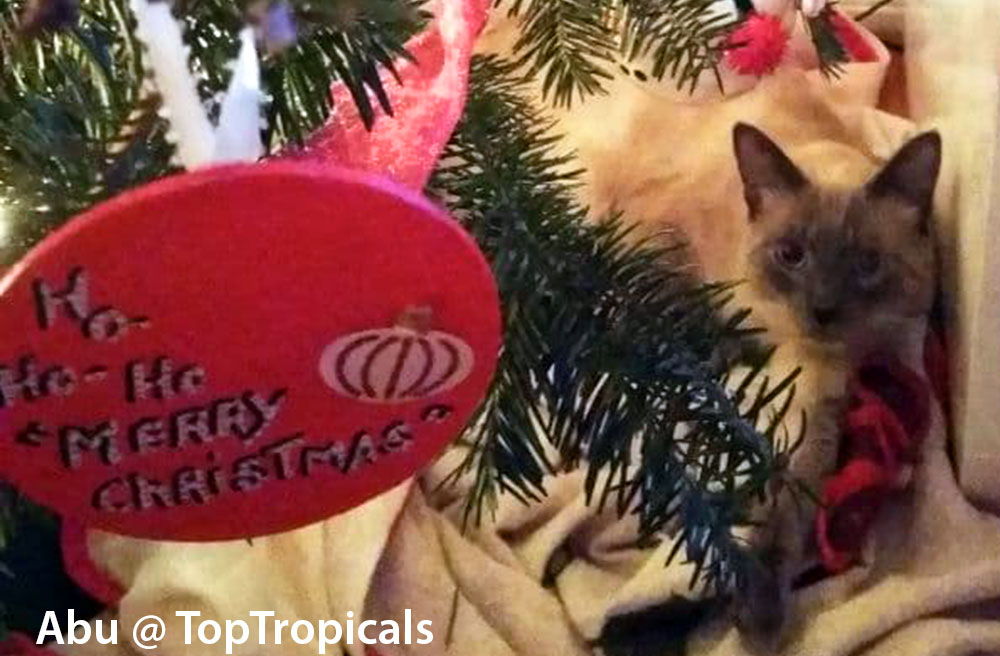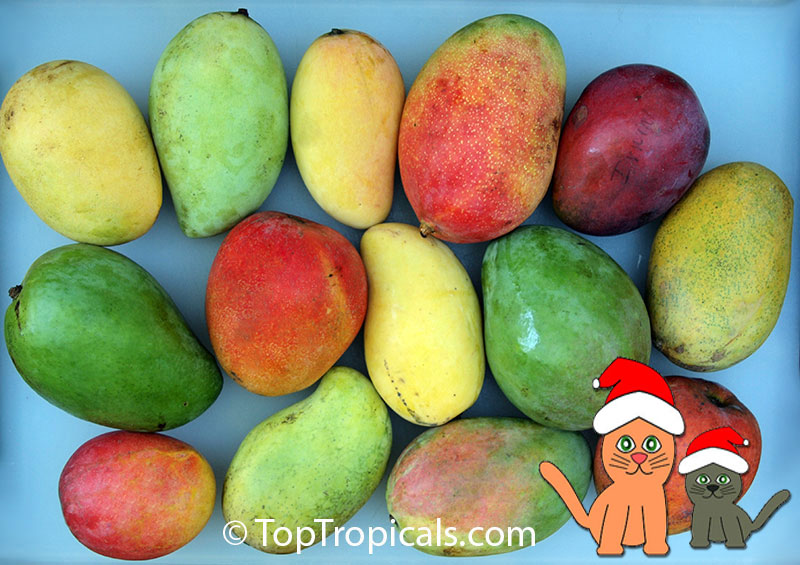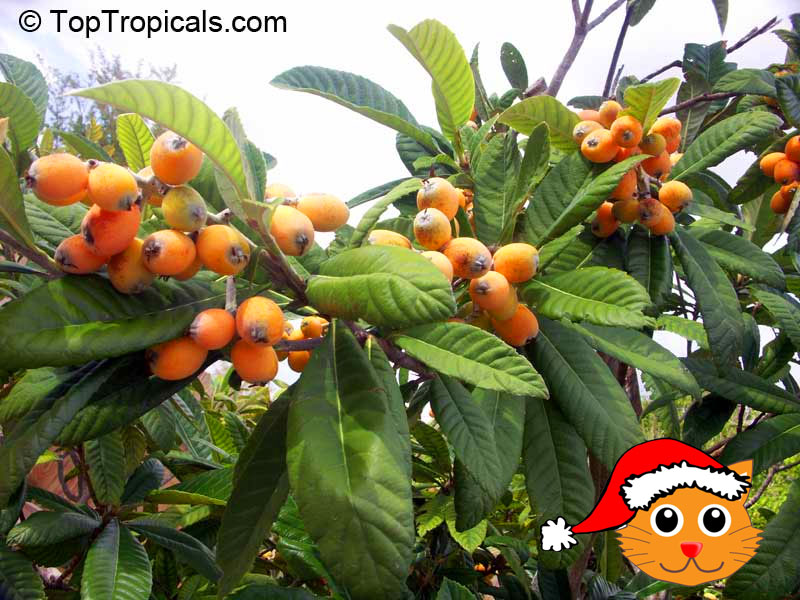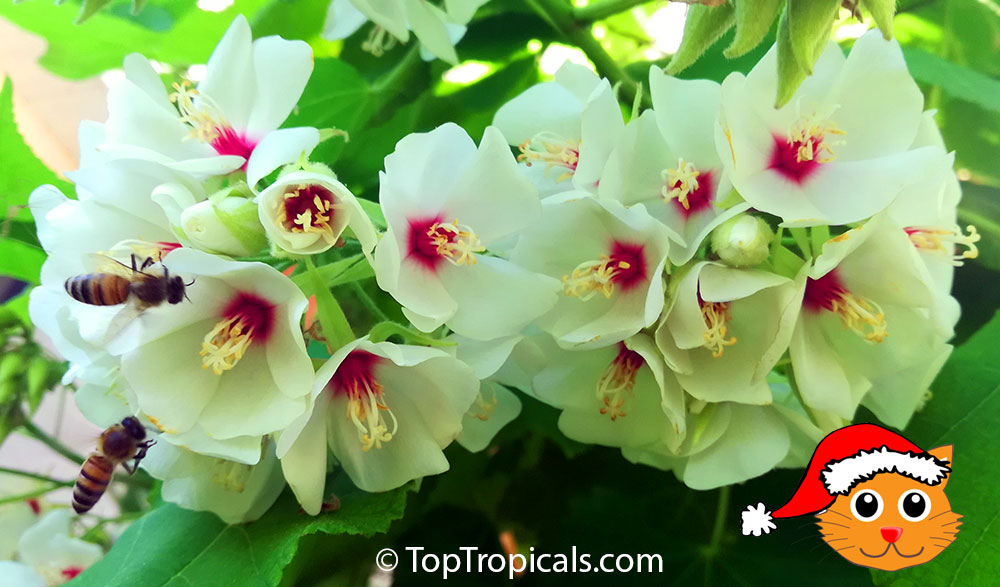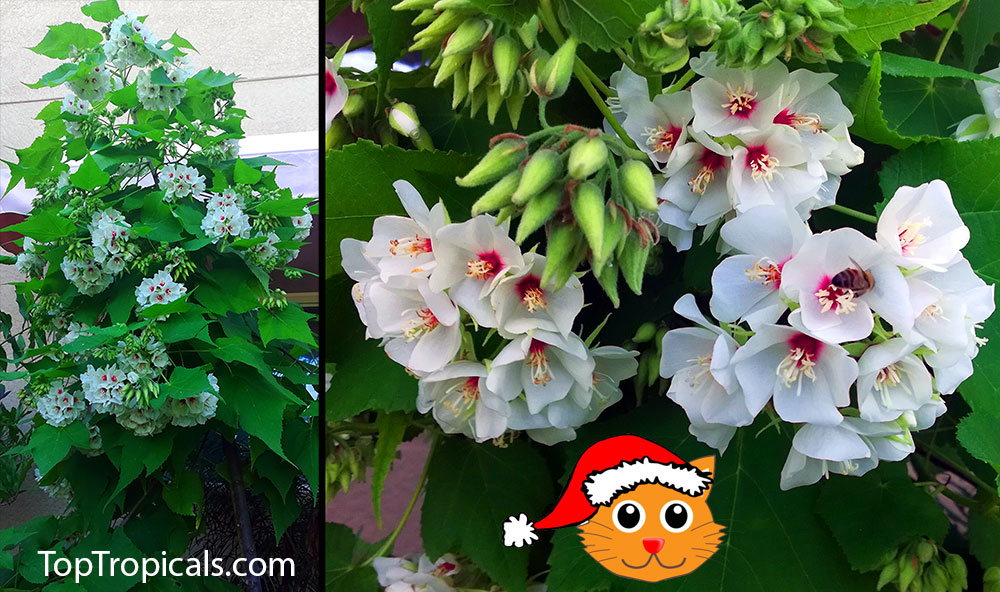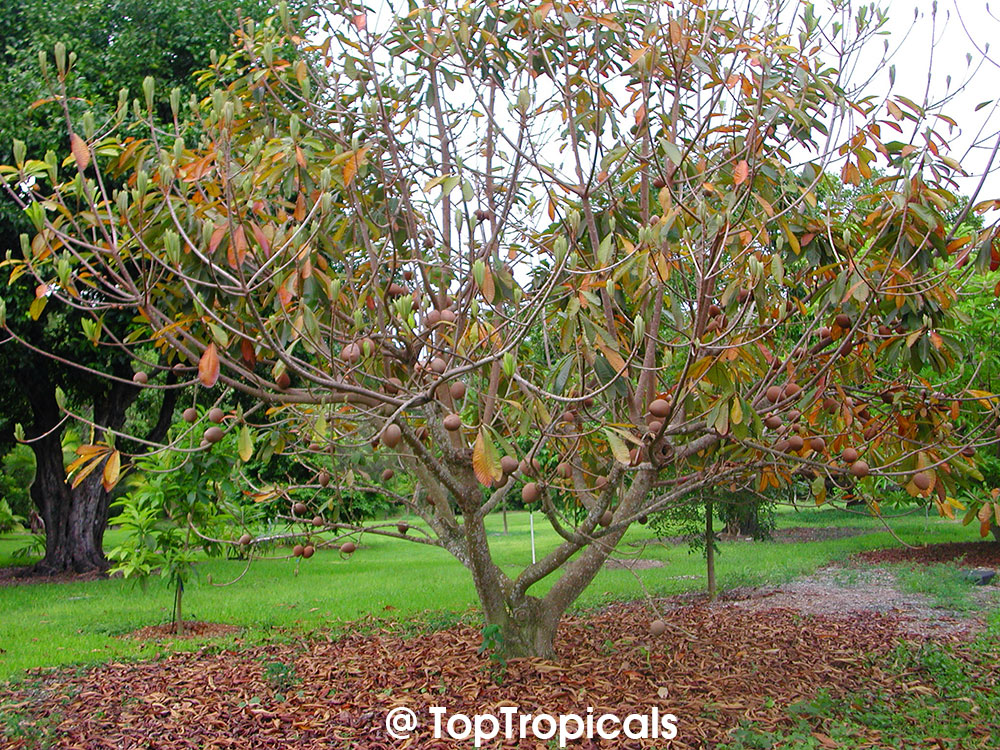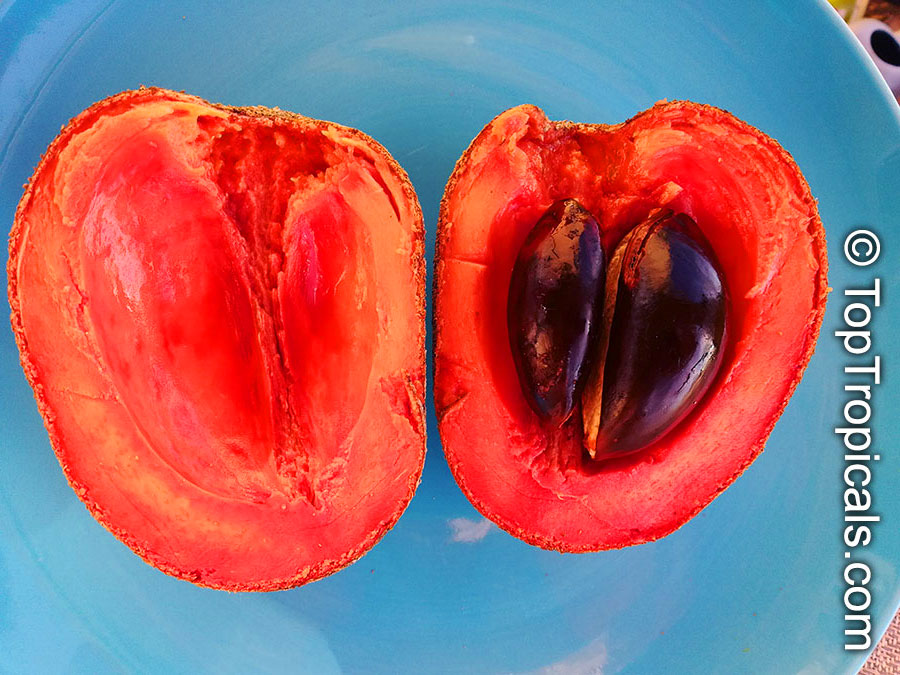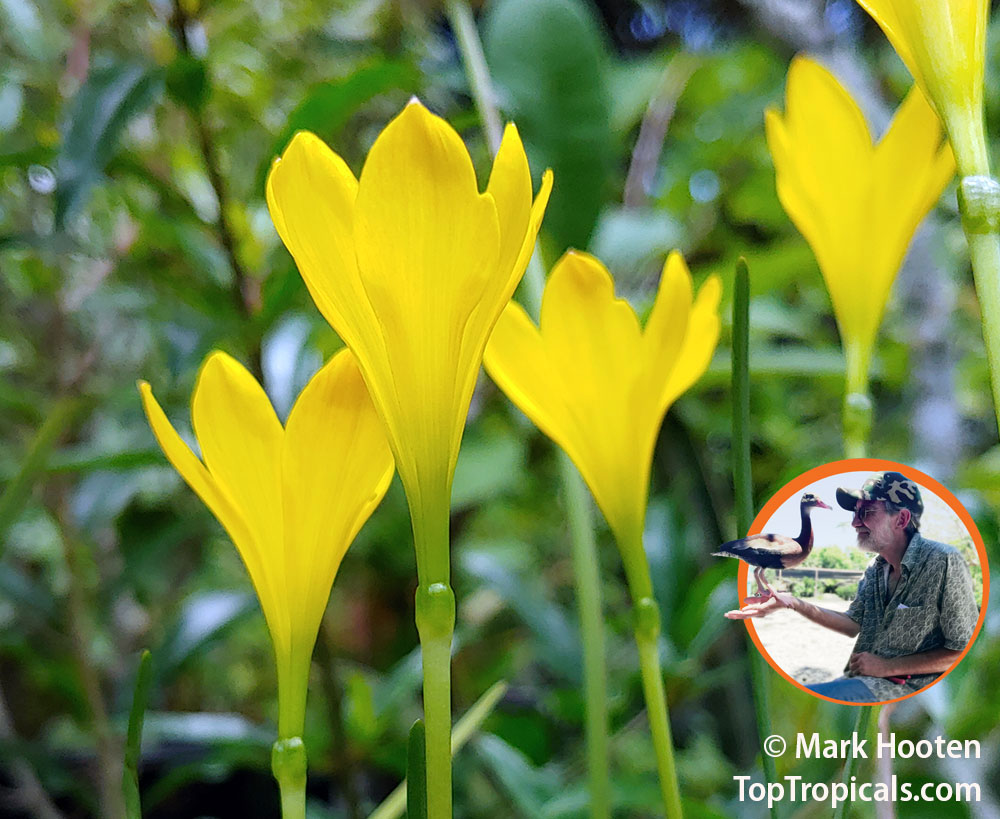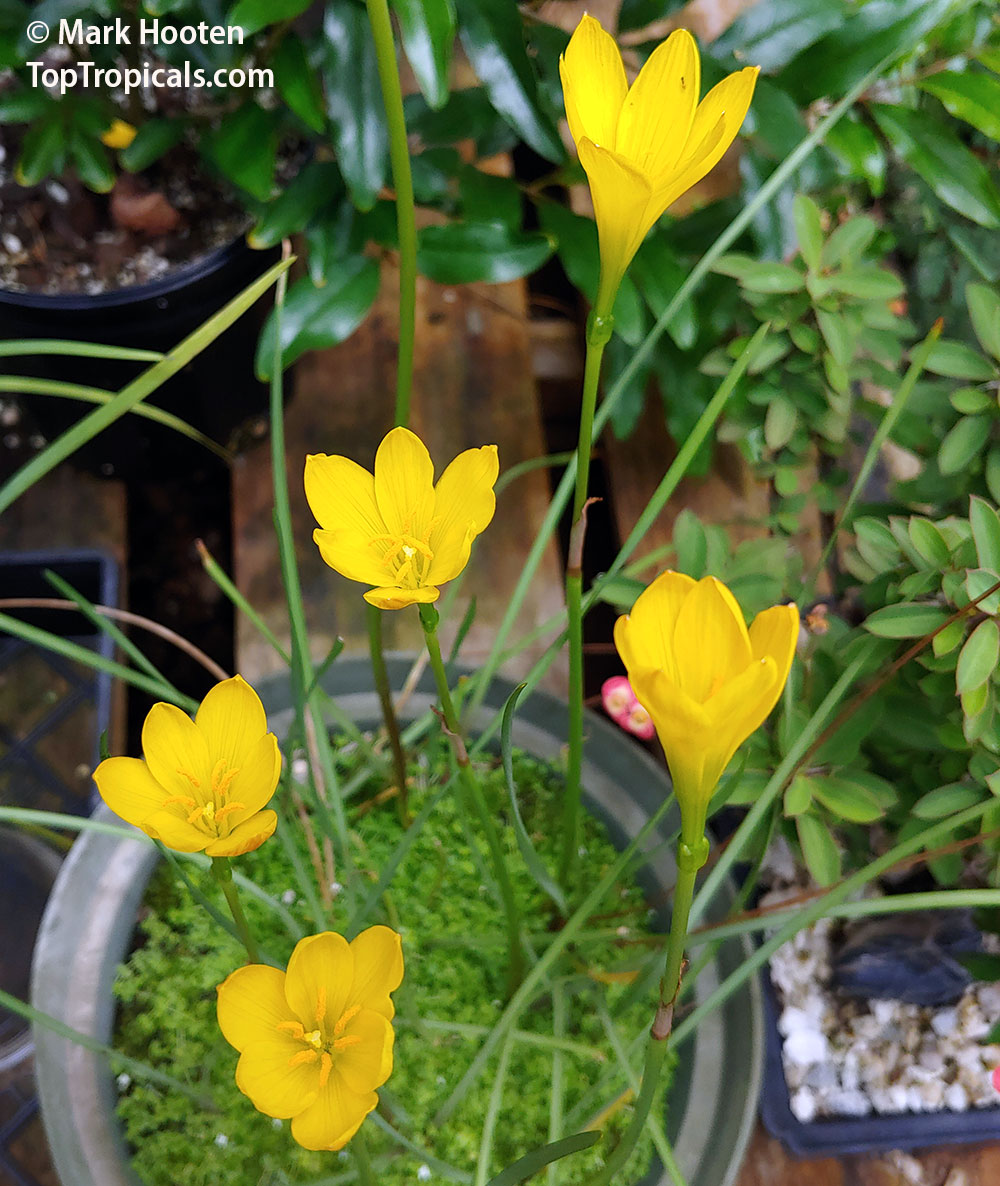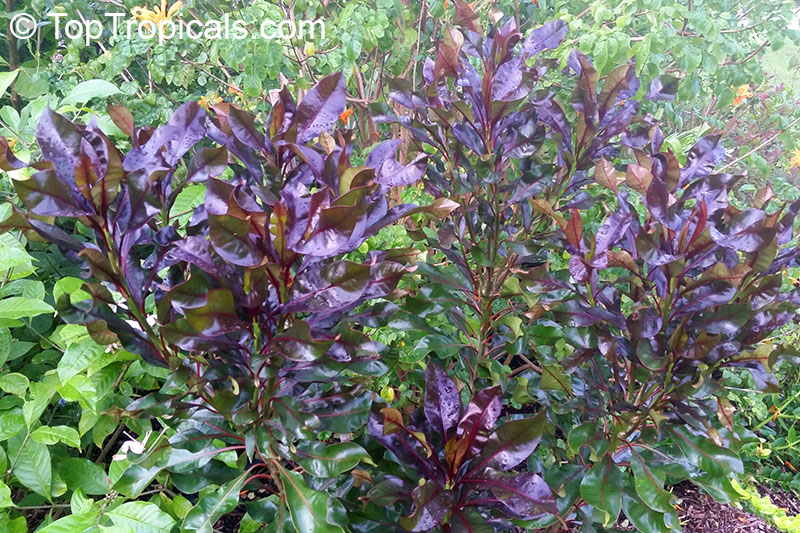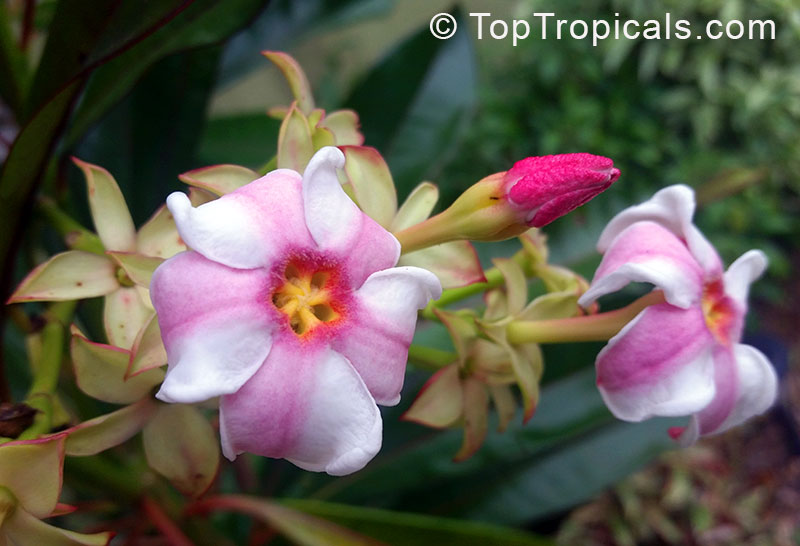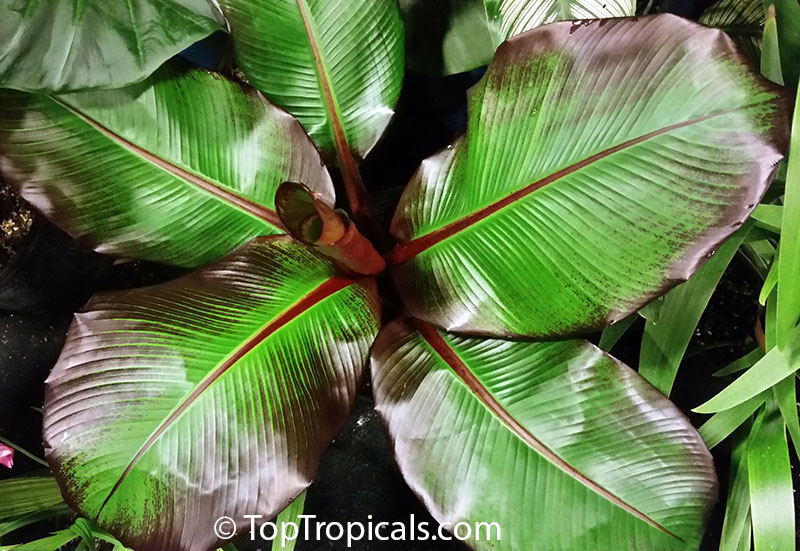Garden Blog - Top Tropicals
Date:
Growing Stephanotis and cold protection
Q: I bought from you 3 plants Stephanotis How do I protect them from this low temperature now? I live in Ft Myers Beach.
A: In Ft Myers Beach, you have frost-free winters. You don't have to worry about cold protection for the Stephanotis. It is pretty cold hardy plant in spite of being a true tropical (it enjoys Hawaii environment for example). From our own experience, Stephanotis can even take a light frost for a short period of time without any damage.
You can keep this plant either in a pot or plant in the ground in a nice
sunny location for more profuse flowering. It can climb a tree, a fence, or a pagoda.
However, keep in mind that during cool weather you need to reduce amount of watering. Wet + cold is a bad combination for plants. Water
again only when the soil gets slightly dry. In summer time, extra water is not critical because it evaporates quickly with high temperatures.
Date:
The Blue Tea Remedy from the Magic Clitoria
By Alex Butova, the Witch of Herbs and Cats
Butterfly-pea flower tea commonly known as Blue Tea is a caffeine-free herbal tea, or tisane, a beverage made from a decoction or infusion of the flower of the Clitoria plant. There are not many who know about the benefits of blue tea. For centuries the butterfly-pea flower tea was only known in South East Asia... The bright blue petals from the flowers of the butterfly-pea plant have been used as an ingredient in herbal tea drinks throughout the region for centuries as well as used in cooking...
CONTINUE READING >>
Date:
PeopleCats of TopTropicals. Cat of the Day: Abu, the Quiet Fighter
The Story of Abu, a brother of poor little Raja, is also challenging, but has a happy ending!
...Abu started out a quiet reserved little man. From the beginning you would find him in the
quarantine room snuggled under his thick blanket sleeping. Abu did not like to ask for help but was grateful when you gave it. We tried to help him use a toilet while his
leg was casted and getting into the letterbox was a challenge for him... However, he was too orthodox in his views to believe he needed help...
...Abu was the worse off of the two found kittens. Dr didn't sugar coat the
outlook. He gave him a thirty percent chance of walking again. The morning after the first medication, I woke up
like a kid on Christmas morning... Dressing quickly, I went to the kitten's room to see if there was any change... Abu was still laying down, not getting up on his
own. As I looked over his little body, I made my way to his swollen little wrist to see if there was any change...
CONTINUE READING >>
TopTropicals PeopleCat Club and Zoo
Thank you for supporting us in helping PeopleCat Community!
Make
your kind donation today and receive a surprise gift from us! Every little
bit helps. Thank you and God bless you and your pets!
Date:
Mango ID and ripeness
Q: As the World's Leading Authority on Tropical Plants, I hope you can help us out. We obtained a mango tree from a City giveaway, and planted it a few years ago. This is the 1st year it has produced fruit. They are almost all green color, & range from 6-7 inches in length. Attached are a few photos of the tree & its fruit. Please help to identify the type, and how to determine when they would be ready to pick. Or should we just wait until they fall off of the tree?
A: If the tree is grafted, it normally starts flowering within a year after planting. If
the tree is over 6 years old and just now started fruiting - chances are, this is a seedling (possible at giveaways)
without specific variety. However the fruit looks pretty good size and shape, hopefully it tastes great. You will find out soon!
Based on the pictures, there maybe a few possible choices, including
varieties (or their seedlings) Keitt, Rosigold, it can be even Lancetilla if fruit grows bigger than 7" long. The next step would be, wait until the fruit get some color, then it will be easier to narrow down the variety.
Also see if there is a lot of fiber or no fiber.
You may wait until at least one fruit ripens on the tree and let it fall naturally - that
will be the color (can be all green, but in your case it looks like it's turning yellow blush). After that, you may pick full size fruit before they fall and let them
ripen on a kitchen table. Usually once the fruit starts showing color, it is close to ripening. For all-green varieties, just wait till fruit grows to maximum full
size. You may also check if the fruit gets softer to touch, then it's ready.
Date:
Healthy Plants: Q&A from Mr Booster
What is an ideal potting mix?
Q: A few years ago, I purchased a Barbie Loquat from you, and I'm pleased to say it's been growing very well. I now have several loquat seedlings. I have read that a well-draining medium should be used, and I have found that the various formulations provided on the web for such medium seem vaguely reminiscent of the recipe provided in your transplanting instructions. Therefore, I would like to retrieve your recipe, unless you could recommend an even better one?
A: The main requirements for a good potting mix are:
- perfect drainage, allowing air circulation that is so necessary for
healthy roots; oxygen circulation helps to avoid root rot
- water retention: to keep nutrients in soil
- low pH (soil acidity) which is important for most tropical plants
- adequate amount of organic matter in the mix, in combination with proper
fertilizer program
In our nursery we experimented with many different potting mixes for the past couple decades. We ended up with an ultimate mix for tropical container plants that we designed ourselves. This custom mix is called -
Abundance - TopTropicals professional soilless potting mix
It meets all the requirements above which makes it a perfect mix. All
our plants are happy with it.
Abundance is a professional quality (nursery-grade) potting mix with great
drainage characteristics, ideal for any tropical plants. It is organically
derived soil-less mix, free of any additives.
Ingredients are:
- fine Canadian peat moss
- coconut coir
- perlite
- aged pine bark (soil conditioner).
See more info on
soil mixes.
We have this mix available for purchase in different packaging sizes - 2, 3, and 7 gal
bags.
Besides proper potting mix, all container plants require regular
fertilizing. We recommend the newest, scientifically balanced fertilizers Sunshine Boosters that are natural, eco-safe, great for all edibles and
organic gardening. They are safe to use with every watering, provide all
necessary elements for plant daily needs, and won't burn the roots.
For your loquat tree, consider Sunshine C-Cibus, it boosts both flowering and fruit production. Loquat
is Winter-Spring bloomer, hopefully you will get some crop soon!
See more information about potting mix science
Date:
Plant of the Month:
Fragrant Dombeya Tree
Every tropical gardener wants to have a Dombeya (a.k.a. Tropical Hydrangea) in their collection - an easy to
grow, fast growing winter bloomer. These plants don't require any special care,
thrive in neglect in both sun or shade, and flower profusely during
Fall-Winter months - what an awesome treat! Dombeyas are also wanted for their
vigorous growth habit - they can cover unwanted view in no time, fill and empty
corner in your yard, create a colorful tropical display, and attract lots of
butterflies and bees. They are not afraid of water logging, in fact the more you
water them, the faster they grow. The large tropical leaves are beautiful -
soft, fuzzy, with shallow, maple-like lobes. This plant is tolerant to both
light frost and periods of drought.
Most Dombeyas grow into round, dense bushes, but this one variety of is
very special. Dombeya burgessiae from South Africa actually grows into a small (10-15
ft), pretty, upright tree that is covered with beautiful blossoms during
winter. The flowers are creme color with raspberry centers, attracting lots of
pollinators, and what is the most special - they are sweetly fragrant! What a
beauty!
Surround yourself with aromatic cloud of Dombeya winter blooms!
Date:
Establishing Mamey Sapote
In the photo: Mamey Sapote lre-leafing.
Q: I purchased Mamey sapote last fall and am very excited about having it in my yard. It lost leaves during the winter, but then budded and put on a lot of beautiful leaves. I was hand watering since this covid stay at home event, and thought I'd put it in a larger container, 10 gallon. About 2 months after transplant and hand watering the leaves turned yellow. I cut back on watering, allowing some dryness between. Some leaves now have fallen off, but looks like new ones forming. What have I done and most importantly now, what do I need to do so she survives? I haven't yet decided exactly where to plant her... so hoping she can stay in container for a bit longer while recovering.
A: It is possibly a combination of over-watering and seasonal
changes (re-leaf). During this time of the year, Pouteria sapote loses old
leaves and grows new ones. This plant is semi-deciduous, which means, it drops
leaves during unfavorable conditions (too dry, too wet, too cold, to hot, etc. =
any stress).
The new buds are healthy. Give it a couple of weeks. Reduce watering. Don't water again if the soil is still moist.
If planted in the ground, it will be easier to control the moisture, as long as you plant it high enough (at least 3-4" above the surrounding area, like on a little hill, for a better drainage.
See
how to plant a tree.
Once you notice a new growth and healthy leaves, give the plant some
food:
SUNSHINE C-Cibus - Crop Nutrition Booster
Mango-Food - Smart Release Fruit Tree Booster
Date:
Zephyranthes pulchella - sunny face of incredible Magic Lily
by Mark Hooten, the Garden Doc
...These wonderful little lilies came as a gift from a botanist studying
the native plant life of Southern Texas nearly 30 years ago. Originally
grown from seeds collected for a doctoral thesis, near the town of Refugio (along
the Southern Texas Gulf Coast, just north of Corpus Christi), this
brilliant, fetching tiny lily really deserves to be more well known. The thin,
grass-like leaves grow from small onion-like bulbs that produce an abundance of
shockingly bright cadmium-yellow flowers which greatly resemble those of certain
yellow Crocus, except on longer stems.
There is one caveat which goes along with this incredible species... it can
be wonderful, depending upon a growers situation... which is that this
species is "apomictic". This means that they produce seeds which do not require
cross pollination, and technically are clones of each mother plant!..
CONTINUE READING >>
Date:
Establishing Cerbera Manghas
after a long shipping trip
Q: I live in Hawaii. I purchased Cerbera x manghas - Enchanted Incense. I followed the repotting instructions but it looks like dying? Is the normal for all the leaves to fall off? I only use purified water to mist and water the plant. I let it dry between watering and still it looks sad. Please help!
A: Cerbera is very sensitive to shipping stress (in particular to
darkness) and it often loses leaves in transit. Considering long trip to Hawaii, it had extra 1-2 days in transit, longer than to most of the
states.
Your plant looks very much alive, however we understand your concern about lost leaves.
You need to treat it like Plumera: keep on a dry side until it starts
sprouting new leaf growth. Once it gets re-established, you may move it out into regular irrigation or
rain.
We recommend to keep it under roof to control water input, but in very blight spot, preferably
sunny.
Make sure the soil doesn't get soggy, too much water may kill the plant especially when it is leafless and hence doesn't consume/evaporate much water.
Water only when top of the soil gets slightly dry.
Do not put into bigger container until roots start growing.
The plant should recover and start new growth under proper care. Keep us in loop how the plant is
doing!
Date:
Musa ensete Maurelli - Red Abyssinian Banana
by Onika Amell, tropical plant expert
Q: I am looking for a colorful, tropical plant with in particular, coarser texture, to add to planting beds next to my decks and around my swimming pool. Any suggestions? I am located in St. Petersburg, FL.
A: Consider incorporating some fast growing Red Abyssinian Banana, also known as wild banana or Ethiopian banana. This is a fantastic ornamental from East Africa and an excellent choice to create a tropical feel and to add coarse-textured foliage. This plant is not a true banana and therefore does not produce any edible fruit. American gardeners were rather slow to discover this enormous perennial, but finally woke up to them over the last decade to a point where they now are considered to be one the most beautiful ornamental banana plants for the landscape and for good reason...
